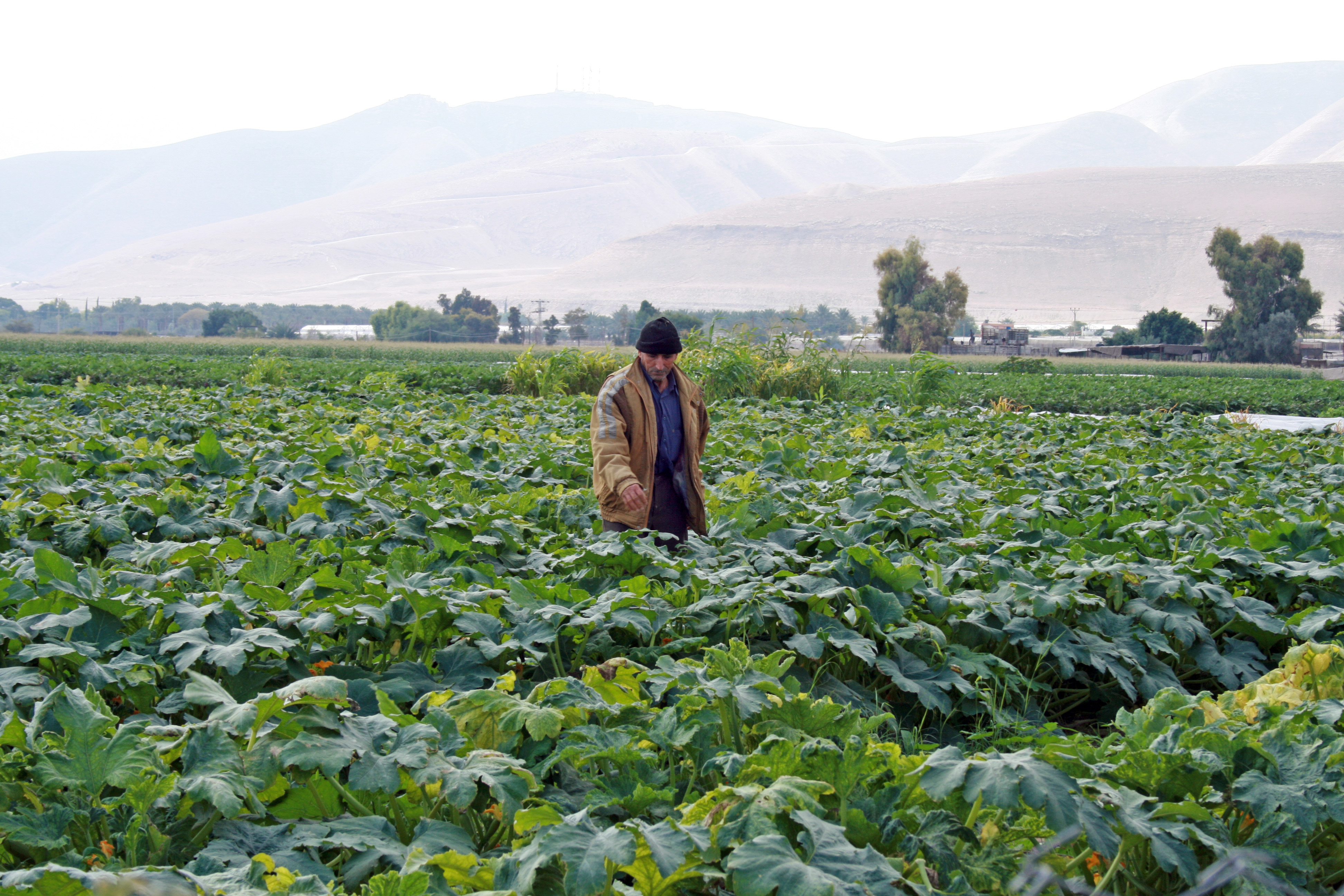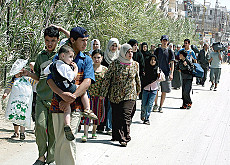Keeping the Dead Sea alive

The level of the Dead Sea between Israel and Jordan drops a metre per year, a situation that threatens the ecosystem. A Swiss scientist is trying to help.
The region’s inhabitants draw too much water from the local rivers, leaving an insufficient amount to compensate for evaporation from the famous lake.
Tourists travelling to the Dead Sea from Jerusalem are always surprised to see how the road leads downhill. There is an almost 1,100-metre difference in altitude between the city and the sea.
After an hour’s drive, they reach Kalia Beach and the world’s lowest bar, which is 411 metres below sea level. In a few months’ time, the sign showing the depth will have to be updated because the Dead Sea is dropping fast.
But this doesn’t just mean that tourists wanting to float on the briny water will have to walk a little farther. It also means the region’s entire ecosystem is changing.
Little left over
“Half the animal and plant species found along the River Jordan have already disappeared,” says Swiss researcher Christopher Bonzi, the scientific coordinator of the German-funded Glowa Jordan River Project.
Looking at the global impact of water use in the region, the project has highlighted the fact that the Dead Sea is shrinking because the Jordan’s inflow has been reduced. Israel, Jordan and Syria all draw so much water from the river that little is left over.
“Ninety-eight per cent of the water is used for agriculture, industry, tourism and drinking, leaving just two per cent for the Dead Sea,” Bonzi told swissinfo.ch.
Proposals to help save the lake include building a canal from the Red Sea, the so-called Two Seas Canal. Israel and Jordan would build it along their border.
The altitude difference could be used to generate power, which could be used for desalination. A World Bank study is already underway to determine the effects of such a project on the environment and the population.
Doubts
While the idea seems attractive at first glance, Bonzi is not so sure that it is as good as its promoters, including the three governments involved, claim.
“There are some risks involved,” he said. “Taking water from the Red Sea could upset the ecosystem there and damage coral reefs that are vital for the tourism industry. Salt water from the canal could also infiltrate underground water supplies.”
Desalination, which requires large amounts of energy, raises other questions, such as what effects the leftover brine and the chemicals used for the process would have on the Dead Sea, and whether the influx of water would upset the lake’s delicate balance.
“My biggest concern though is that the plan is just to fill up the sea with water,” said Bonzi. “Freshwater will still be pumped from the upper reaches of the Jordan, and lower down, where the river is vital for biodiversity and tourism, it will be missing.”
“The various stakeholders are aware of the problem, but getting the different parties in this region to work together to rehabilitate the Jordan is extremely difficult,” he added.
Water stress
Bonzi, who worked previously for Swiss association Pro Natura, points to Switzerland to illustrate the task ahead. “It’s hard enough convincing power companies not to restrict water flow from lakes and rivers to protect nature and our landscapes,” he explained.
The Middle East suffers particularly from so-called “water stress”. This is related to the high population density coupled with large water requirements and low rainfall.
Palestinians, the weakest of the stakeholders, feel the effects the most. Drinking water has always been an issue and must be imported at high cost.
Israel has also considered shipping water from Turkey and building expensive desalination plants along the Mediterranean coast, while Jordan suffers from a lack of drinking water as well.
This water stress is expected by specialists to increase, with climate models predicting less rainfall and even stronger evaporation.
Knowledge flow
In the meantime, the scientists of the Jordan River Project want to deepen their understanding of the region and make stakeholders aware of the benefits of sustainable water use.
Bonzi spends much of his time crossing borders, travelling between Amman, Jerusalem, Tel Aviv and Ramallah in the Occupied Territories to ensure the flow of data and knowledge between the different project partners.
Local scientists find it harder. The last annual conference was held in Jordan, and while all the Palestinians were present, some of the Israelis were missing, apparently banned from attending by their institute.
Meetings in Israel are not really an option either because of the difficulty the Palestinian colleagues face when crossing the border.
Bonzi is pessimistic about the outlook for the Dead Sea. “Opinions about the canal are largely set already, independently of the World Bank report due out next year,” he said. “But one day we will have to tackle the problem of water use in the upper Jordan.”
On May 9, 2005 Jordan, Israel and the Palestinian Authority signed an agreement to go ahead with a feasibility study for the Two Seas Canal. The agreement was signed on the Dead Sea by Jordanian Water Minister Raed Abu Saud, Israeli Infrastructure Minister Binyamin Ben-Eliezer and Palestinian Planning Minister Ghassan al-Khatib.
The proposed canal would siphon seawater 230 metres uphill from the Red Sea’s Gulf of Aqaba in Jordan and then run down into the Dead Sea, which lies about 420 m below sea level. The project will consist of about 200 km of piping and canal along the Arabah valley in Jordan. It is expected to take about five years to build.
The project cost estimates vary from $1 billion to $10 billion depending on its structure and stages. It includes power plants which will provide electricity for pumping the water from the Red Sea and water desalination plants. The desalination plants will provide up to 850 million cubic meters of fresh water a year to the three countries. Since hydroelectric generation will supply the needs of the pumping of the water from the Red Sea, the remainder of the power needed for desalination will be supplied using conventional energy sources.
A shorter route running from the Mediterranean Sea has been proposed in Israel in the past, but was discarded due to high investment costs of the needed long tunnel.
The proposal has generated some concern in Egypt, which believes that the canal will increase seismic activity in the region; provide Israel with water for cooling its nuclear reactor near Dimona; turn the Negev Desert in to a settlement area and increase the salinity of wells.
(Source: Wikipedia)
(adapted from German by Scott Capper)

In compliance with the JTI standards
More: SWI swissinfo.ch certified by the Journalism Trust Initiative












You can find an overview of ongoing debates with our journalists here . Please join us!
If you want to start a conversation about a topic raised in this article or want to report factual errors, email us at english@swissinfo.ch.